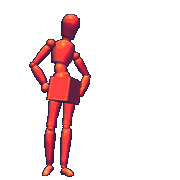 |
Week of Jan. 22 2024 Seminar #1 |
 |
Week of Jan. 22 2024 Seminar #1 |
Proper design is the essential essence of usability. Unfortunately, the everyday environment in which we live in does not always cater toward usability. Usability in our real world is often the result of trial and error, often resulting in products or artifacts which are hard to use. This topic deals with some basic principles of how and why controls and other artifacts found in everyday life are useful or useless. Following the principles which Norman lays out, one can design effective widgets to influence the user positively.
Summary
The reading provides a set of principles and guidelines which smart objects use to communicate with their users.
Objective
Your home is full of objects and artifacts which are hard to use. Why? Based on the readings, scour the university for examples of good and bad designs. Why are these good or bad? What makes the artifact hard to use? What should be done to improve a bad design.
During the seminar, you will be asked to provide examples of your findings. These will be used for discussion purposes. Come prepared with a floor plan, photo or some other visual aid to help the group understand what you are talking about. You will be asked to present your finding. The discussion should relate to, and be relevant to the readings. In particular, the seminar leader may ask for specific cases where the design promotes or hinders usability.
Readings
Marks will be awarded for presentation, preparation and participation in the discussion which exhibit emulsion into the subject matter. Students who do not come prepared can expect a low participation mark.